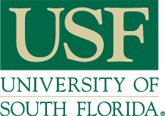Below is a summary of the abstract you submitted. Presenting author(s) is shown in bold.
If any changes need to be made, you can modify the abstract or change the authors.
You can also download a .docx version of this abstract.
If there are any problems, please email Dan at dar78@pitt.edu and he'll take care of them!
This abstract was last modified on March 16, 2021 at 2:27 p.m..

Mycobacterium phage Girr is a Siphoviridae that belongs to the F1 subcluster and possesses a temperate life cycle. Girr gp42 is a hypothetical protein classified as an NKF since it has no functional hits in HHpred. gp42 is 237bp and encodes a 78 amino acids protein. TMHMM indicates that gp42 posses one transmembrane domain. The overall research goal is to determine whether expression of gp42 gene is toxic to the bacteria, M. smegmatis, or served in a defense/immunity role. Polymerase Chain Reaction was utilized to generate gp42 for cloning. Expression was confirmed by a gel electrophoresis to establish that the amplified bands was the expected size. Since gp42 showed a solid band in the gel electrophoresis at the expected size of 283 base pairs, Isothermal Assembly was utilized to ligate the gene into the plasmid pExTra. The use of pEXTRA was imperative to this procedure because of its contains an inducible tet promoter. Using this procedure pExTra-Girr42 was generated and purified for downstream experiments in M. smegmatis. The first experiment was a cytotoxicity assay. In this assay, colonies of M. smeg expressing the pExTra-Girr42 were picked and spotted onto 7H10 agar plates containing the tet inducer, atc. M. Smeg expressing both positive and negative control plasmids were also spotted on the plates. All bacteria expressing pExTra-Girr42 was able to grow in the presence and absence of atc suggesting that gp42 was a non toxic protein. The immunity assay determines whether gp42 protects the M. smeg from infection by Girr and also a test phage, Larva. Neither phage was prevented from infecting the M. smeg in the presence of gp42. While the data observed showed negative results, it cannot conclusively be determined that the negative result in the cytotoxicity assay translates to a non-toxic gene. This is because there are other factors that could be required for a positive outcome such as protein interactions to other phage or bacterial proteins, or higher levels of gp42 expression (since the level of gp42 was not quantified). It will be important to assess these possibilities in future work. We thank Danielle Heller, Vic Sivanathan and the SEA GENES team for support of this project.
